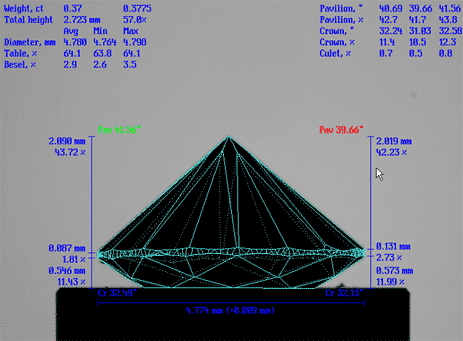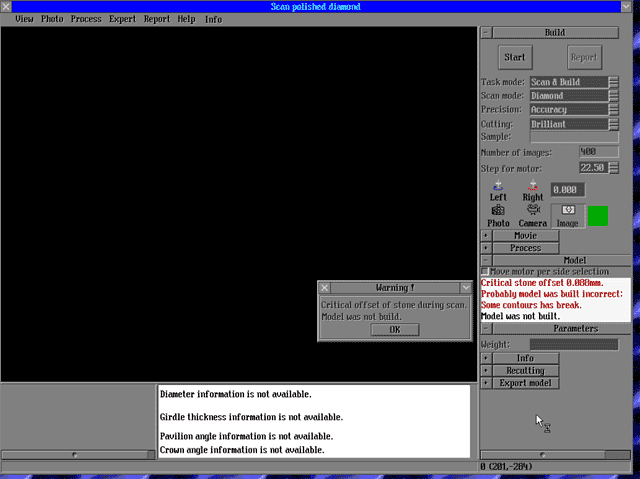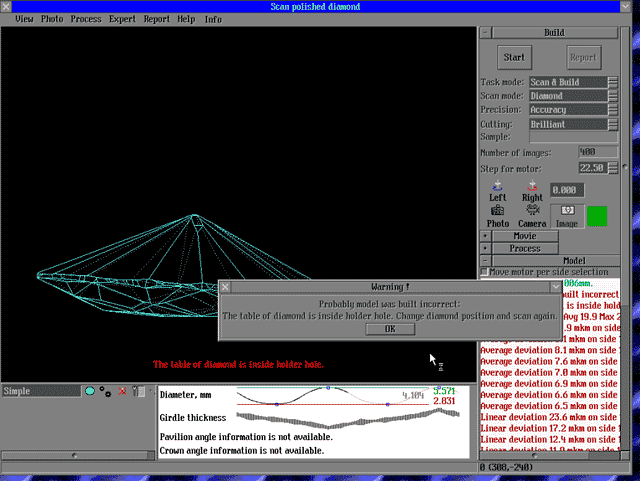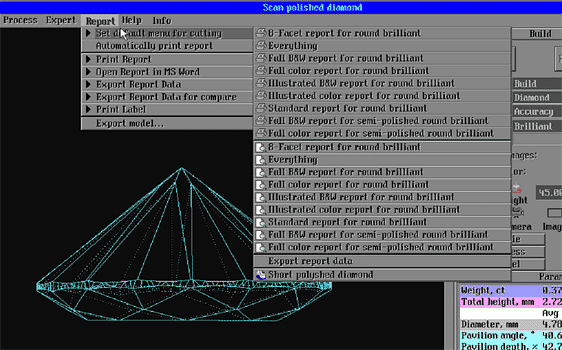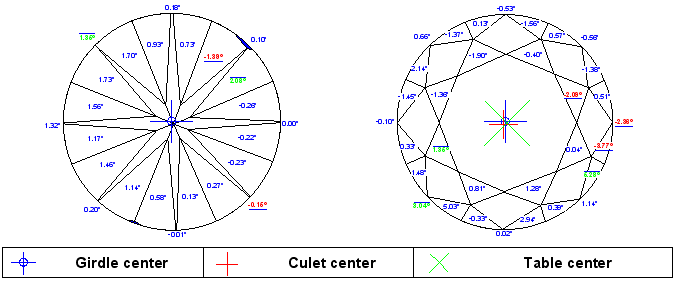| Helium polish software |
|
Detailed description of updates and possibilities for new pre-release (3.50.773) of program Helium Polish |
||
1. Image of parameters in the scene After scanning and building of model you can see information about model in the scene. For switching on of this tool please click by the button of mouse on the "Info" in the toolbar of panel Scan polished diamond.
Figure 1 Information consists of sections with parameters of three-dimensional model of stone (at the top right and left corners) and section with parameters of two-dimensional current projection which you see in present moment in the Scene. In case of movement or rotation of model information of 2D-projection is ever-changed. It corresponds to projection in the scene plane. When you rotate model in arbitrary position then program shows information about facets whose azimuths of normals is more closed to scene plane. Information includes next values of parameters (see figure 2):
Note that minimal value of parameter is shown in red color, maximal value of parameter in green color (see figure 2). Section with total information of 3D model is at the top of Scene. There are weight of stone, total height in mm and %, minimal, average and maximal values for diameter, table, bezel girdle thickness, pavilion angle and depth, crown angle and height, culet size.
Figure 2 2. Automatic diagnostics of diamond shift during scanning process During scanning process stone can be shifted from its primary position because of rotation of motor. In this case program automatically determines shift and after scanning process you will see message "Critical offset of stone during scan" (see figure 3). Program doesn't build model if stone is shifted. Press ok. You will see red message in the Scene "Critical stone offset is ….mm" until rescanning. Please check work of pump and scan stone once again.
Figure 3 3. Automatic diagnostics of hit of the vertex of Table facet of scanned diamond to the holder hole During scanning one or some vertexes of stone table may be situated in the holder hole. Program defines this mistake and after scanning and building of model message will be appeared: "Probably model was built incorrect: The table of diamond is inside holder hole. Change diamond position and scan again". (See figure 4). Please follow these instructions and don’t use wrong model in future.
Figure 4 4. Reports for semipolished diamonds and for arbitrary cuts Menu Report was changes in new version. Thus it consists of reports for semipolished diamonds and improved reports for fancy cuts (see figure 5). Menu Report includes some submenus:
Figure 5 5. Improved reports for RBC, Marquise, Pear, Oval cuts, which are considered the specificity of these cuts New templates of reports are accessible for Helium System users. Besides new design of reports the following parameters were added:
6. Greatly better building of fancy cuts such as Marquise, Pear, Oval 7. Time of scanning is decreased significantly The overall improvement (scanning and building of model) in the speed is about 25%.
8. Modes of scanning were changed and improved Method "Optimum" was changed and now it takes about 23 sec and at the same time accuracy of this method only 1,5 times less than "Accuracy" mode which takes about 45 sec. Now program has following existing methods:
|
||||||||||||||||||||||||||||||||

